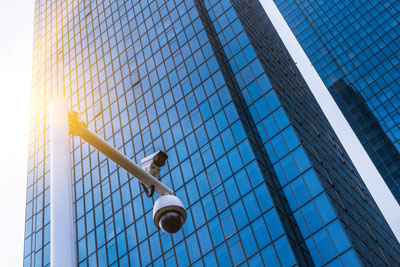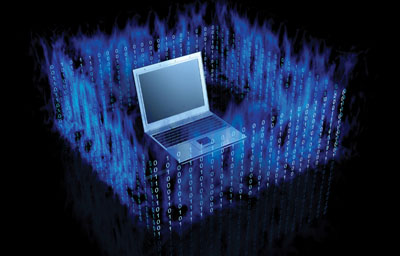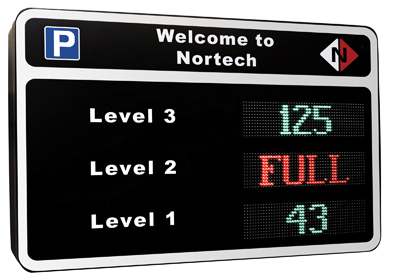It is always interesting to see how businesses and organisations react to discussions centred on the Internet of Things (IoT). Some shudder, as if IoT is something they should avoid being associated with, while others embrace the opportunities it offers and even describe themselves as investing in an IoT ecosystem. The reality is that integrators and end users have nothing to fear from IoT, but much to gain.
Whilst many people like to herald the Internet of Things (IoT) as a complex technological sea-change that will either kill or cure the smart solutions sector (depending upon which approach their company is selling), the concept is actually quite simple. Indeed, rather than being a brave new world, it could be argued that it is simply a smart and much needed upgrade of currently established M2M (machine to machine) communications.
The core concept of IoT is the ability to connect devices, allowing them to share data in order to be more efficient and effective. Whilst the established and understood ‘internet’ is a network of computers and devices, predominantly with human operators, IoT brings automated smart devices into the mix. It allows the machines, if you like, to make autonomous decisions based upon rules that have been programmed by the users and data that has been shared by other connected devices.
As an example, consider central heating in a commercial application. Typically, boilers will operate on a timer schedule, and heating levels will be set via temperature controller in the various office spaces. Thermostatic valves will then regulate the output of individual radiators in order to maintain relatively consistent temperatures. This is the way that central heating systems have operated for decades and is well understood.
In today’s world of mobile devices such as smartphones and tablets, wireless and data-based internet connectivity, apps and automation, a higher level of remote control can be exercised over a site’s heating by the end user. So, how might IoT further impact on this scenario?
Connected temperature sensors – both internal and external – might be used to automatically control times when the boilers are operating, and the heating system’s performance settings can be automatically adjusted in accordance with preset thresholds. This would ensure consistent and comfortable temperatures without any interaction from the user.
The user would still be able to override the configurations, but typically the system would control itself to meet the predefined parameters. Connected automatic valves would allow the adjustment of temperatures in specific rooms or spaces, giving a smarter level of autonomous control.
 Taking things a step further, the heating system could utilise shared data from, for example, a local weather forecasting station. This would enable automatic adjustments for changes in climate, including the occasional heatwave or freeze that the UK seemingly struggles with.
Taking things a step further, the heating system could utilise shared data from, for example, a local weather forecasting station. This would enable automatic adjustments for changes in climate, including the occasional heatwave or freeze that the UK seemingly struggles with.
Additionally, the data generated by other systems could be shared with the heating system to make it more efficient. For example, certain departments or individual offices could have the heating levels reduced or switched off if they are unoccupied or if windows are open.
Indeed, using IoT sensors with regard to heating (or any power-management functions) makes sense because there is a good business case for it.
The efficiencies achieved can save end users money and also help meet any green initiatives the company may have.
This is an important point, because the IoT offers significant business benefits. Too often, people think about simple residential or consumer applications when discussing IoT. While it is true IoT does include very simple domestic options such as switching on a light via an app-based smart plug, it equally can involve the control of business-critical systems to automate a range of site management tasks.
A wide range of benefits
The potential for businesses and organisations using IoT is immense, especially when you consider national and international opportunities.
The scope ranges from business devices and appliances through to IT systems, process machinery, building management, transportation, etc.. There isn’t a lot that won’t be covered as IoT spreads its footprint.

CCTV security camera against cityscape background in Shanghai,China.
However, initially much of the focus will be on the services and devices that can add value in terms of building management: security, safety, power management, heating and lighting control, management of access and egress, and a number of other benefits that create cost- or time-savings through enhanced efficiencies. The business case for such uses is strong and can be easily understood by those seeking a return on investment from their existing and new technology-based investments.
Often a number of legacy devices capture information which can be of great value in a commercial IoT solution which helps manage a building or campus.
Security systems provide a diverse range of data capture sources including video (with all that is possible from intelligent analytics), motion and object sensing, definite identification of authorised persons and asset tracking, along with secure communications in both hard-wired and wireless configurations, advanced event management and host of robust features designed to ensure around-the-clock connectivity.
Access control and HR-related systems such as time and attendance can include real-time data about who is on-site at any given time along with levels of occupancy. This can include information such as whether first-aiders are on-site, if appropriately trained personnel are active in a department or building, and if staff have adequate permissions for any activities.
Environmental monitoring can report status information about the site such as temperature and light levels, which in turn can assist with power management. Indeed, it could be argued that often legacy devices are capable of enhancing the benefits of IoT, although it is common for the potential of existing technologies to be ignored.
Many legacy systems will have been installed as siloed solutions, but that doesn’t mean they cannot function, either as a trigger device or an element to deliver actions. Because IoT was still in its infancy when the systems were deployed, few at the time considered how the capabilities could be deployed in a larger connected solution. However, by revisiting what the devices are doing in terms of either data collection or their ability to perform actions for other purposes than those for which they were originally installed, benefits can be realised.
For example, a site might have cameras installed to secure an area outside of working hours. However, the video data can be used during working hours for a wide range of purposes. These might include people counting, heat-mapping to identify areas of high traffic, vehicle and parking management, detection of queues or loitering, or any number of tasks relating to visual information.
Businesses and organisations can benefit from increased integrations with IoT devices that add benefits to existing technologies. For example, few sites focus on audio transmission because systems were typically complex and costly. However, by implementing networked audio, an IoT system can enjoy a number of benefits while also ensuring the solution is cost-effective. The ability to interface audio with other devices and systems opens up a range of possibilities.
 Audio is increasingly being seen as an essential element of business intelligence. IoT allows connectivity between traditional building and site management tools and best-of-breed audio devices.
Audio is increasingly being seen as an essential element of business intelligence. IoT allows connectivity between traditional building and site management tools and best-of-breed audio devices.
Intelligent lighting control is another area that could offer benefits Whether this is in the form of lighting control to save power when spaces are unoccupied, or the management of lighting for enhanced site safety and convenience, the options are manifold.
When it comes to site management, elements such as electronic signage could offer benefits when connected with business solutions. For example, detectors could count vehicles in and out of car parks to identify where spaces are available. Alternatively, signage could be deployed to inform delivery drivers to go to a holding area if a site’s loading bays are all occupied.
IoT in commercial and industrial applications can be very diverse, but it is not a case of struggling with the enormity of possibilities, but selecting the right devices that can add value to building systems.
Challenges
The smart solutions industry has to embrace the opportunity to link diverse system elements together, both in the worlds of building management and business process control systems, but any progress must consider the issue of data protection.
The crux of the matter revolves around who decides how data is shared between the various systems, and where the permission comes from between one data platform and the next.
 Cybersecurity runs at the heart of this conversation, specifically data security encryption with protocols. In the world of IoT, it is not just the edge device manufacturers who will have a say in how security will be implemented. The software companies will also have input, as will the technology giants. The Googles, Apples, Microsofts and Ciscos of this world want IoT to be easy to implement in the consumer market. The business world, however, needs more stringent protection.
Cybersecurity runs at the heart of this conversation, specifically data security encryption with protocols. In the world of IoT, it is not just the edge device manufacturers who will have a say in how security will be implemented. The software companies will also have input, as will the technology giants. The Googles, Apples, Microsofts and Ciscos of this world want IoT to be easy to implement in the consumer market. The business world, however, needs more stringent protection.
This technological challenge will be resolved in the commercial arena where the benefits of IoT are not only easily understood, but also represent a return on investment for those businesses and organisations which embrace the tangible benefits.
The economics of convergence are significantly more important to businesses and organisations than consumers, and as the business case for IoT applications grows, so will the demand for dependable and flexible solutions.
The potential value of machine-to-machine opportunities are enormous and integrators and end users must work to deliver an appropriate solutions strategy. Increasingly key to this will be the adoption of open platform systems, ensuring that smart technologies can reliably interact with those from other sectors.
A significant benefit of the open platform approach is the ability to move away from one-brand systems. All too often, the systems targeted at the commercial sector comprise modular systems which integrate together, but which are all supplied by a single manufacturer. While this has benefits, in that all system elements should integrate seamlessly, this is achieved at the cost of flexibility, innovation and freedom to select cost-effective components from a growing range of suppliers.
Manufacturers have been known to switch direction suddenly in order to chase after emerging trends. If a site has invested heavily in a single brand solution, it might turn out to be a waste of budget if the manufacturer decides the future is not in the commercial sector, but lies in the consumer market.
Alternatively, if a manufacturer has a ‘Kodak’ moment, in that it refuses to adopt new technologies because it is more interested in protecting its leadership in a dwindling sector, the loser could be those who’ve invested in a proprietary infrastructure.
Another important challenge is tempering users’ expectations and ensuring they understand what is sensible and what is foolhardy when it comes to IoT. For example, the often-quoted IoT fridge might seem like a frivolous idea, but it does make sense in certain applications. However, such a device is unlikely to be designed with a business use case in mind, so adding one to a company’s network which also supports process control, security, building management and HR services would be a risk that should not be contemplated.
Any IoT device or connection must be as secure as critical parts of the corporate network. By way of an example, when Target – the large US-based retailer – suffered a significant cyberattack and data breach, it was discovered the network was accessed via the air conditioning system.
Even when IoT elements are connected in a network environment, it doesn’t always make sense for every device or system to be linked to the corporate network, or for certain critical systems to share infrastructure with less important (and at times less secure) resources.
 Adding devices or systems to an IoT environment is a choice, not a mandatory situation is which every networkable device must communicate with every other device. Only connect additional devices which add value to the system, and ensure those devices offer the same level of cybersecurity as the critical elements of the solution.
Adding devices or systems to an IoT environment is a choice, not a mandatory situation is which every networkable device must communicate with every other device. Only connect additional devices which add value to the system, and ensure those devices offer the same level of cybersecurity as the critical elements of the solution.
If other systems want to access data, then ensure this does not create a vulnerability which might impact on the central system. This is not always straightforward as those managing other systems might be reluctant to allow access to the core configurations.
The only way to ensure all elements of an IoT solution are secure is for the various departments to share knowledge and training on how the various elements interact and the operational requirements for the system. Whilst this works well for commonly integrated systems , use of IoT could introduce unrelated technologies that need to work together. The end user needs to dictate the requirements in most cases.
Making it work
The smart systems sector has been founded on the use of advanced IT processing and flexible IP-based infrastructure, something which has helped it deliver flexible integrated systems to meet changing needs. Unfortunately this has not always been the case in reverse, with some IT providers being slower to catch up with the intricacies and benefits of integrating with smart systems.
Integrators and end users must ensure they understand the core intricacies of IP configuration such as firewalls, VLANs and SSL which can be deployed to enhance overall security. Equally, the smart systems industry must understand the intricacies of other sectors which are offering IoT devices, ensuring all parts of a solution work well together.
Generally most organisations are protected against cyberattacks, but a connected IoT device may not uphold the required level of end-point security. A simple IoT device could be used to perform a straightforward task, but there is no guarantee it will include core cybersecurity protection such as SSL encryption, IP filtering, secure authentication, etc.. This could create a weak point in the security of an IP network.
An IoT temperature sensor sold to homeowners to monitor a fridge or freezer will probably not have the depth of cyber protection you’d expect from an IoT temperature sensor designed to monitor fridges in a medial research environment. Both will measure temperature, allowing a system to create notifications if there is a significant variance in heat levels. However, the professional unit will be designed to sit on a critical network, whilst the consumer unit will be used with standard WiFi.
The question of who is responsible for the specification of components used in IoT systems must be clearly defined. In a typical business the different facets often have specific owners: the IT department, HR, the security team, etc.. However, IoT will see many areas blur together, and the responsibility for these crossover areas needs to be defined to ensure security and resilience of the business systems.
IoT will deliver true integration. All systems will run on the network. Buildings will be designed with standards-compliant structured cabling solutions built in. This will guarantee that the services required for the client will work, no matter what and where it is to be deployed.
Standards addressing distributed building services outline the requirements for installing points for the network to be accessed. If end users want an IoT solution, the infrastructure will be close by to allow the service to be deployed.
Once services, no matter what, are using the TCP/IP Ethernet protocol, they are ready and able to join an IoT platform.
In summary
IoT deployments promise to provide benefits for businesses. They also bring potential risks, which are by no means insurmountable. With the right considerations, planning and cooperation, the benefits of IoT implementations by far outweigh the risks.


